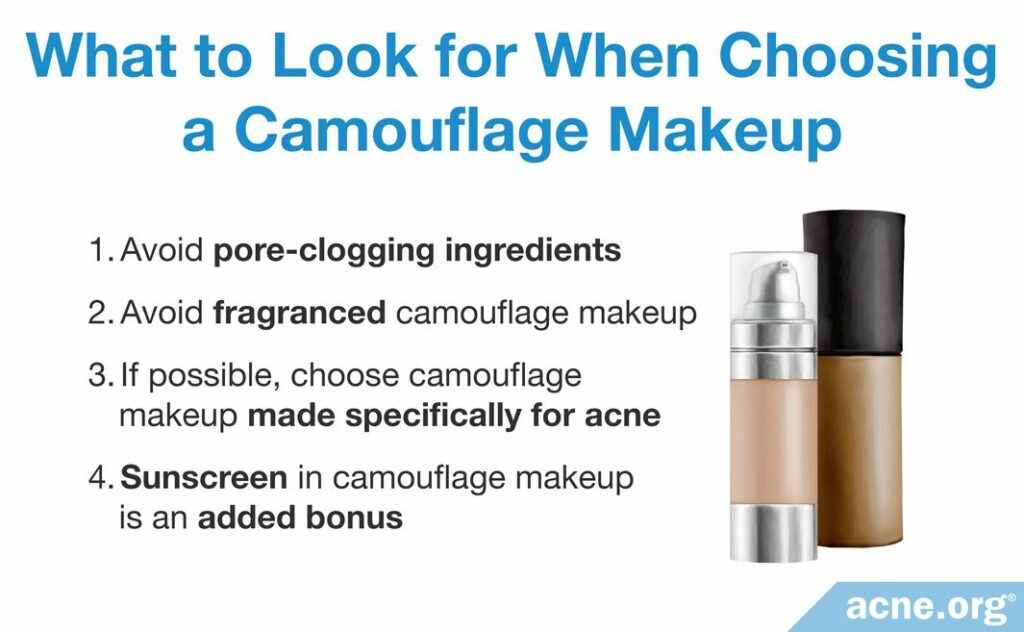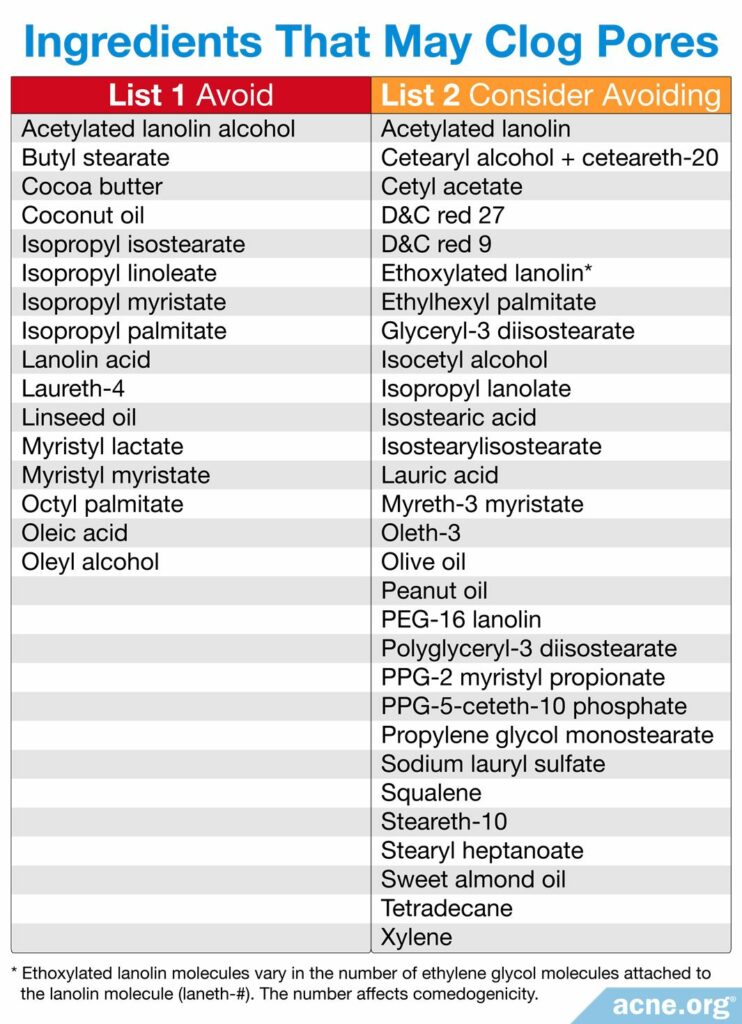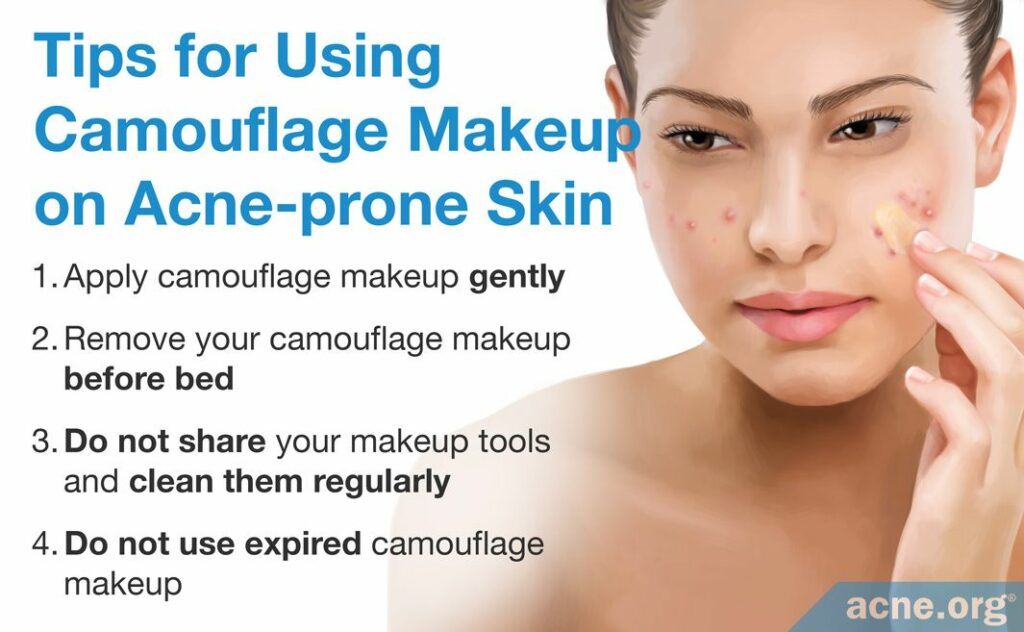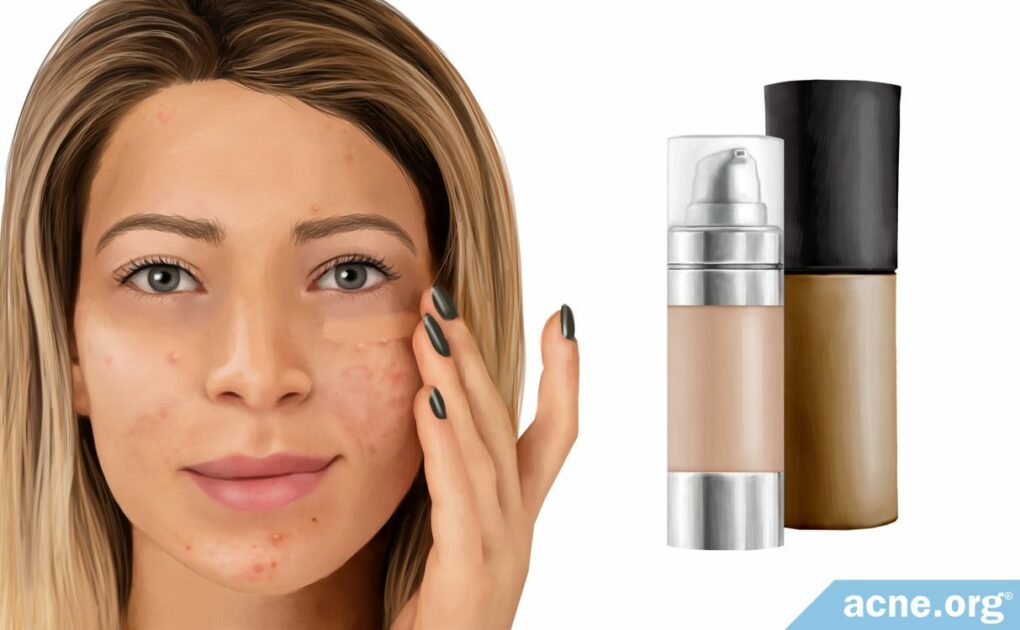Select Camouflage Makeup That Is Free of Pore-clogging Ingredients and Apply It Gently

The Essential Info
Before buying camouflage makeup for acne-prone skin, take a look at the ingredients. Avoid camouflage makeup that contains pore-clogging ingredients.
Also avoid products with fragrances, which may irritate the skin and aggravate acne, or may cause allergies in some people.
Camouflage makeup containing salicylic acid and/or sunscreen may be preferable, if you can find it.
Important Considerations When Using Camouflage Makeup
- Apply it gently: Physical irritation of the skin can lead to more acne, so apply camouflage makeup as gently as possible.
- Remove it before bed: Very gently remove all makeup before bed.
- Don’t use expired makeup: Expired makeup products can be rancid or grow bacteria. Use only fresh camouflage makeup.

The Science
- Guidelines for Choosing Camouflage Makeup for Acne-prone Skin
- List of Common Comedogenic Ingredients in Makeup
- Tips for Using Camouflage Makeup on Acne-prone Skin
Camouflage makeup is used to cover especially severe skin conditions like:
- Vitiligo
- Tattoos
- Skin imperfections such as scars, stretch marks, and burns1,2
- Severe or very red acne
The most popular camouflage makeup products are:
- Camouflaging foundations
- Camouflage concealers
- Camouflaging creams and powders2
People with acne may wish to use camouflage makeup to cover acne lesions, acne scars, and/or hyperpigmentation (darkened spots that sometimes remain after acne lesions have healed). However, since makeup itself can potentially trigger acne,3 applying camouflage makeup to acne-prone skin may seem like a Catch-22. The good news is that you can find camouflage makeup that is safe for acne-prone skin by following these guidelines:
Guidelines for Choosing Camouflage Makeup for Acne-prone Skin

- Avoid pore-clogging ingredients: Before buying camouflage makeup, take a look at the ingredient list. Avoid camouflage makeup that contains pore-clogging (comedogenic) ingredients. The table below provides a full list of common comedogenic ingredients.
- Avoid fragranced camouflage makeup: Some camouflage makeup contains fragrances, which are the ingredient most likely to cause allergies. Even if you do not have allergies to fragrances, they may irritate your skin and thereby make acne worse. The safest approach is to select fragrance-free camouflage makeup.
- If possible, choose camouflage makeup made specifically for acne: Some manufacturers produce camouflage makeup for acne by adding salicylic acid, which is an over-the-counter active ingredient that can help somewhat in keeping the skin clear. The concentration of salicylic acid in over-the-counter products like makeup is low, so it is unlikely to lead to a dramatic improvement in acne. Still, it may be a good idea to wear camouflage makeup with this ingredient if you can find it.
- Sunscreen in camouflage makeup is an added bonus: If you spend a lot of time in the sun, it is important to protect your skin from the sun’s rays. Camouflage makeup containing broad-spectrum sunscreen is a good choice, but you can also purchase a separate sunscreen product if your camouflage makeup does not contain this ingredient.
List of Common Comedogenic Ingredients in Makeup
Many studies have explored how likely various ingredients are to cause clogged pores (comedones).4 We have thoroughly reviewed this research and compiled two lists:
- Definitely avoid: These are ingredients that people with acne-prone skin should definitely avoid, because a solid body of evidence shows that they are comedogenic.
- Consider avoiding: These are ingredients that people with acne-prone skin may want to consider avoiding, because some evidence suggests that they might be comedogenic.

Tips for Using Camouflage Makeup on Acne-prone Skin

Physical irritation of the skin can aggravate acne, which is why it is important to avoid irritating the skin whenever you apply camouflage makeup or any other cosmetics to acne-prone skin.4 To prevent skin infections, it is also essential to practice good hygiene. Keep these tips in mind when you use camouflage makeup on acne-prone skin:
- Apply camouflage makeup gently: Select the softest makeup brushes or sponges, or simply use your fingertips, and be gentle when applying camouflage makeup to avoid irritating the skin.
- Remove camouflage makeup before bed: It is important to remove camouflage makeup and any other makeup before you go to bed because the skin is more vulnerable at night. Since camouflage makeup is thicker than regular makeup and usually waterproof, you may need to use a water-in-oil cleanser to fully remove it. Be sure to choose a product that is specifically labeled as a facial cleanser, ideally a liquid cleanser, and avoid soap entirely.5 Be gentle when cleansing your skin so as not to irritate it.
- Do not share your makeup tools and clean them regularly: Do not share your makeup brush or other tools with anyone, as sharing makeup tools increases your chances of contracting a skin infection. Use disposable tools or clean your tools regularly to prevent the growth of mold and bacteria.
- Do not use expired camouflage makeup: Expired camouflage makeup may start to break down or begin to harbor bacteria. Never use makeup that has expired.
